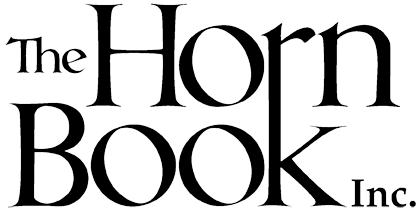Five questions for Paula Yoo
Rising from the Ashes: Los Angeles, 1992. Edward Jae Song Lee, Latasha Harlins, Rodney King, and a City on Fire (Norton, 12–18 years) by Paula Yoo provides a thoughtful, in-depth, and very compelling account of the 1992 Los Angeles uprising, the events leading up to it, and its aftermath from multiple points of view from the Korean American and Black communities.
Rising from the Ashes: Los Angeles, 1992. Edward Jae Song Lee, Latasha Harlins, Rodney King, and a City on Fire (Norton, 12–18 years) by Paula Yoo provides a thoughtful, in-depth, and very compelling account of the 1992 Los Angeles uprising, the events leading up to it, and its aftermath from multiple points of view from the Korean American and Black communities. May is Asian American, Native Hawaiian, and Pacific Islander Heritage Month; in this issue of Notes see “Stories for Asian American, Native Hawaiian, and Pacific Islander Heritage Month” about recent books for slightly younger readers. See also Yoo’s 2021 Boston Globe–Horn Book Nonfiction Award speech for From a Whisper to a Rallying Cry: The Killing of Vincent Chin and the Trial That Galvanized the Asian American Movement.
1. Why did you decide to write a book for teens about the 1992 Los Angeles uprising?
 |
| Photo: Hyungwon Kang. |
Paula Yoo: On April 29, 1992, I was getting ready to graduate with my master’s degree at Columbia University’s Graduate School of Journalism. I remember seeing the breaking news on TV of the shocking acquittal of four LAPD officers in the brutal beating of Rodney King as well as the traumatic footage of the shooting death of Latasha Harlins by Soon Ja Du from the year before.
I remember seeing the searing images of Korean American storeowners forced to raise arms to defend their stores. The fires. The protests. The tears. I remember watching the live presidential address when then-President George H. W. Bush mentioned the Korean American community…which was the first time a sitting president had ever directly addressed our community. I was a twenty-three-year-old Korean American at the time, and it was one of the most seminal moments of my Generation X years.
Out of the one billion dollars in damage from the 1992 L.A. uprising, almost half was disproportionately in Koreatown. Yet we were only portrayed as minor characters in a sidebar story…or we were portrayed as one of the main villains. The lack of nuance and depth of reporting frustrated me. The main headlines gaslit both of our communities, making it seemingly our “fault.” The stories back then promoted false stereotypes of all Korean Americans being anti-Black and all Black people being anti-Asian xenophobic instead of examining the systemic racism and laws rooted in white supremacy in our country, which forced two disenfranchised, marginalized communities to scramble for limited resources. There were so many beautiful and powerful stories of solidarity between our Korean American and Black communities that got shuffled off the front pages and buried, and I wanted to make sure those stories were no longer erased or forgotten…especially for our younger readers. In a sense, Rising from the Ashes is my love letter of solidarity for our Korean American and Black families.
2. How did your research process compare to the process for your other nonfiction books?
 PY: My research for Rising from the Ashes followed the same pattern as my other books, and also from my former life as a journalist and even as a novelist and TV writer/producer. It’s a balance of facts and feelings. I interviewed over one hundred sources, researched thousands of news articles, videos, and documentaries, and read all the original court transcripts for the trials.
PY: My research for Rising from the Ashes followed the same pattern as my other books, and also from my former life as a journalist and even as a novelist and TV writer/producer. It’s a balance of facts and feelings. I interviewed over one hundred sources, researched thousands of news articles, videos, and documentaries, and read all the original court transcripts for the trials.
During my early years as a budding journalist, I was often told to be “objective.” But as I grew older, I realized it is impossible to be objective because we all come to the table with our own baggage, our unique life experiences, and even our own confirmation biases. I learned it was about being both fair but also learning how to employ your own upbringing to find a new, fresh angle never explored before that made a “familiar” story original.
As a journalist and nonfiction writer, I’m not just a witness. I’m an interpreter. It’s my interpretation and perspective of how I filter the facts and how they affect my heart. So for all my writing, be it fiction or nonfiction, my research is rooted in figuring out what’s the central story and what is the emotional journey of all the characters involved. I am not researching historical figures…I’m researching human beings. That’s why I bookend Rising from the Ashes with three people’s names. We open with mentions of “Edward Jae Song Lee,” “Latasha Lavon Harlins,” and “Rodney Glen King.” We end with the names they went by with their loved ones: Eddie. Tasha. Glen. I hope the reader has learned to become their friends and to take up the mantle to make sure the world knows their lives mattered and that their legacies live on.
3. What was the most surprising thing you discovered while working on the project?
PY: As with my book on Vincent Chin (From a Whisper to a Rallying Cry), I was surprised by how willing and even eager people were to talk to me about some of the most painful and awful events in their lives. I was beyond honored and grateful that almost everyone I approached immediately agreed to talk and tell their stories. That shows to me this urge and incredible need for people to make sure their points of view, their stories, and their lives are not erased. Their courage and resilience inspire me every day, and I try to live by their examples. Having said that, there were people who ultimately declined to talk with me because they’re still struggling with their pain and want to remain private. And for me, that silence is an act of courage because it shows they are processing and healing, and I respect that.
For example, I was surprised and grateful that Ronald Ebens, the man who killed Vincent Chin, had the grace to allow me into his home to talk with him for my last book. But then I was also surprised — and heartbroken — when the family of Soon Ja Du, the Korean American storeowner who was found guilty of manslaughter in the shooting death of Latasha Harlins, declined to talk with me for this book. I had hoped because of my background as a Korean American writer that they might want to speak with me. But that naiveté backfired because the family had worked so hard to find peace, and my reaching out triggered them. They firmly told me that for them, this is not just a book. This is their life. To this day, that breaks my heart and it’s my han (the Korean concept of deep sorrow) to carry. Which is why I wrote about how their silence is their jeong (the Korean concept of love rooted in compassion) because Soon Ja Du’s children wanted to protect their mother. There is unresolved pain for all these families that we must respect and honor. This silence speaks volumes.
4. What was the hardest part about working on this project?
PY: The hardest part was knowing that I had to ask very difficult and delicate questions that would force my interview subjects to relive the worst moments of their lives and confront their most heartbreaking, tragic losses all over again. For the families of Edward Jae Song Lee, Latasha Harlins, and Rodney King, 1992 did not happen in the past, nor in a vacuum. It’s still woven into the fabric of their present-day timelines and daily lives. They must coexist with this violence, devastation, and pain every day. They have worked hard over the past few decades to learn how to move forward with their lives and embrace joy while this grief still hovers in the background.
As with my interviews with the family and friends of Vincent Chin, I knew that my questions would trigger them and force them to relive the worst days of their lives. I knew that I would be witnessing trauma and PTSD where my interview subjects would not just remember what happened in 1992…they would relive it. And after these interviews ended, I had the privilege of being able to walk away and go on with my life while these families were stuck with this pain all over again, fresh and raw. I worked hard to gain everyone’s trust and to make sure they knew I was not going to exploit their pain, but instead celebrate the beautiful lives of their loved ones. As a result, there were not just tears during these interviews…there was also joy.
5. What do you hope teens and educators will learn from reading your book?
PY: I hope teens and educators learn that people want to talk about their pain because they are tired of being ignored and want people to understand what they went through so that it doesn’t happen again. My book is about approaching famous historical events from lesser-known angles and viewpoints often dismissed or erased. I hope all readers walk away knowing that like a diamond, there are many different and unique facets to the same story and history that all shine brilliantly, beautifully, and powerfully.
From the May 2024 issue of Notes from the Horn Book.
RELATED
ALREADY A SUBSCRIBER? LOG IN
We are currently offering this content for free. Sign up now to activate your personal profile, where you can save articles for future viewing.







Add Comment :-
Comment Policy:
Comment should not be empty !!!